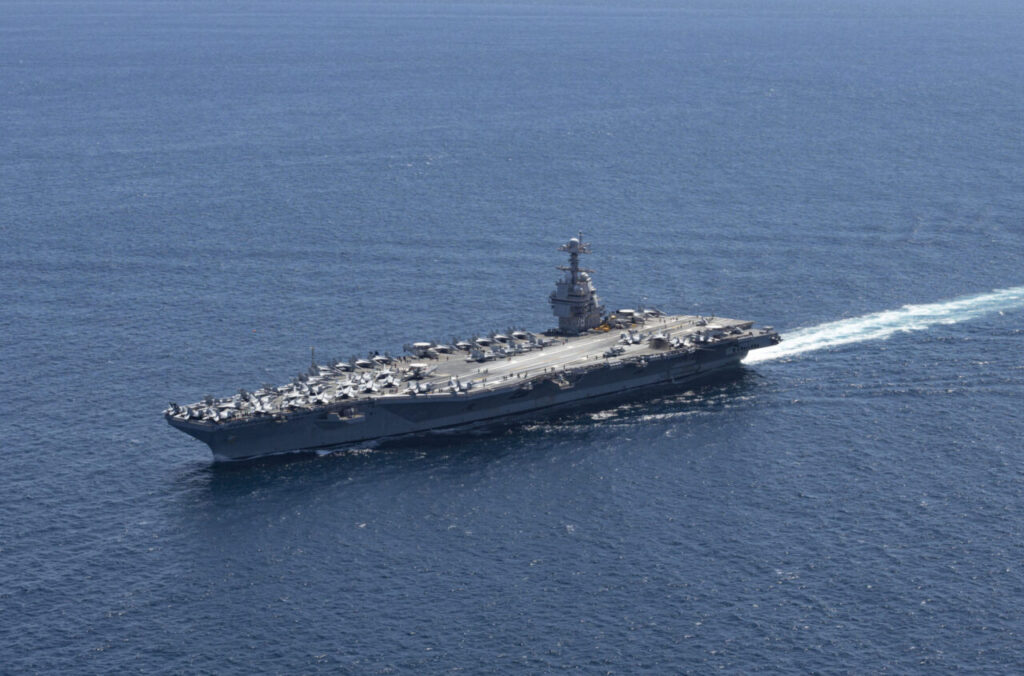
The USS Gerald R. Ford, the newest and most advanced aircraft carrier in the US Navy, is currently operating in the Mediterranean Sea as part of a scheduled deployment. This deployment is in support of the US European Command and marks a significant joint operational activity alongside the Spanish Navy.
The USS Gerald R. Ford Carrier Strike Group (CSG) recently transited the Strait of Gibraltar, accompanied by several Spanish Navy warships. This collaboration highlights the longstanding alliance between the US and Spain. According to Cmdr. J David Garcia, commanding officer of ESPS Canarias, “This operational activity in the Strait of Gibraltar shows the solid commitment of Spain as a strong ally in a key access point to the Mediterranean Sea.”
While the USS Gerald R. Ford’s future movements remain unclear, the possibility of a shift toward the Red Sea has been raised. Since the escalation of conflict involving Hamas and Israel in October 2023, the US has maintained a substantial naval presence in the Red Sea. The departure of the Nimitz-class USS Harry S. Truman from the region in May 2025 has left a gap, as no other carrier strike group has since replaced it. The USS Carl Vinson CSG, previously stationed in the North Arabian Sea, is now supported by the Nimitz CSG.
Capabilities of the USS Gerald R. Ford
The USS Gerald R. Ford (CVN-78) is the first ship in its class, named in honor of the 38th president of the United States. Laid down in 2009 and commissioned in 2017, this carrier represents a significant advancement over the aging Nimitz-class vessels. The US Navy plans to acquire a total of ten Ford-class carriers, which will gradually replace the Nimitz ships at a one-for-one rate.
While the Nimitz-class carriers have served the Navy effectively for over fifty years, the Ford-class vessels incorporate cutting-edge technologies. Notably, the Electromagnetic Aircraft Launch System (EMALS) replaces the traditional steam catapult, allowing for more efficient aircraft launches. This system operates using a linear induction motor, enabling the Ford carriers to launch up to 25 percent more sorties. Additionally, the Advanced Arresting Gear enhances landing operations and significantly increases the electrical power generation capacity of the ship.
The next ship in the Ford-class, the USS John F. Kennedy, is expected to enter service soon. Until then, the US Navy will continue to rely on its existing Nimitz carriers to execute its strategic objectives at sea.
The deployment of the USS Gerald R. Ford in the Mediterranean has significant implications for regional security and demonstrates the US Navy’s commitment to maintaining a robust presence in international waters. As tensions persist in various parts of the world, the operational readiness of advanced vessels like the USS Gerald R. Ford underscores the importance of military alliances and the capabilities of modern naval forces.
By highlighting joint operations and the advanced technology onboard, the USS Gerald R. Ford not only advances US strategic interests but also reinforces alliances with partners such as Spain. The ongoing presence of the carrier group in the Mediterranean reflects a proactive approach to security in a complex global landscape.







